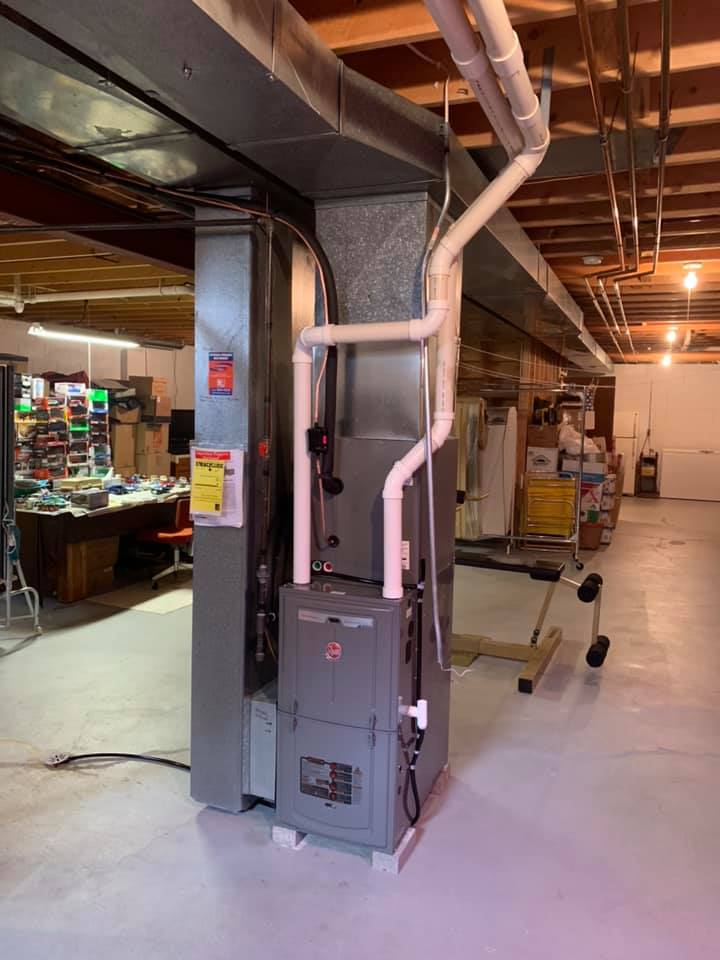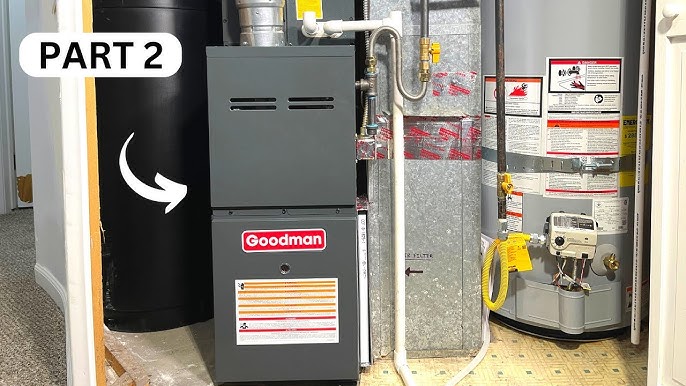The Ultimate Guide to Heating System Setup for a Cozy Home
Heating system setup is a vital facet of keeping a comfy home setting, especially during the chillier months. Comprehending the numerous kinds of furnaces offered and the importance of selecting the proper size can significantly affect both effectiveness and comfort levels. Moreover, a detailed installment process, matched by the right devices and materials, ensures optimal efficiency. This overview aims to gear up house owners with the knowledge required to make informed decisions and execute efficient upkeep practices. As you think about these elements, the inquiry continues to be: what actions can you take to ensure your heating system serves you well for many years ahead?
Sorts Of Furnaces
When thinking about furnace installation, understanding the different kinds of furnaces available is crucial for making a notified decision. The key types of heaters include gas, electrical, and oil heaters, each offering distinct benefits and considerations.
Gas heaters are one of the most common choice due to their effectiveness and reduced operational costs. They make use of all-natural gas or propane, giving quick home heating and regular performance, making them ideal for chillier environments.
Electric heating systems, while normally simpler to mount and maintain, have a tendency to have higher functional costs. They are frequently preferred in areas where gas service is unavailable or for homes with existing electric infrastructure.
Oil heating systems, though less typical today, remain a practical option in particular regions. They melt heating oil, which can be advantageous throughout cooler months, yet their reliance on oil distribution poses possible obstacles.
In addition, there are high-efficiency models offered across these kinds, which can significantly reduce power consumption and utility bills. Eventually, understanding these furnace types will aid home owners select a system that straightens with their home heating requires, budget plan, and energy choices.
Choosing the Right Size
Choosing the suitable size for a furnace is important to making certain optimum performance and energy effectiveness. An undersized furnace will battle to keep comfy temperatures throughout the chilly months, leading to boosted wear and tear, higher energy bills, and potential system failing. On the other hand, a large heating system may cycle on and off also frequently, causing inefficient home heating and unequal temperature level distribution within the home.

Heating system dimensions are commonly determined in British Thermal Systems (BTUs), which suggest the amount of energy called for to heat a room. It is suggested to seek advice from a certified cooling and heating expert that can execute the needed estimations and recommend an appropriately sized device. furnace repair. Investing in the right heating system dimension not only improves comfort but additionally adds to long-lasting energy financial savings and system reliability
Installment Process Review
When the ideal furnace dimension has actually been figured out, the next step entails recognizing the installment process. This procedure generally starts with a detailed assessment of the setup site, including the existing ductwork and ventilation systems. Proper preparation is vital to make certain seamless assimilation and ideal efficiency of the brand-new heater.
The installation normally consists of detaching the old system, which involves safely removing any electrical links, gas lines, and ductwork connected to the previous furnace - furnace repair. As soon as removed, the brand-new heating system is very Homepage carefully positioned and leveled, guaranteeing that it satisfies the supplier's specifications for ideal procedure
Next, the installer will certainly connect the required gas and electric lines, adhering to local codes and security guidelines. Following this, ductwork may require to be modified or replaced to accommodate the brand-new system, guaranteeing reliable air movement throughout the home.

Essential Tools and Materials
Collecting the crucial tools and products is crucial for a great post to read successful heating system setup. Correct prep work ensures that the setup process is reliable and reduces the possibility for mistakes.
Key tools called for include a drill, screwdrivers, wrenches, pliers, and a degree. A multimeter is essential for electric connections, while a pipeline cutter and adjustable wrench are essential for gas line installment. Additionally, a measuring tape and a stud finder will assist in making sure exact positioning and safe and secure fastening of the furnace.
In terms of materials, you will need ductwork, insulation, and securing tape to make certain ideal airflow and energy effectiveness. It is additionally essential to have a brand-new furnace filter on hand, in addition to venting materials, such as PVC pipe or steel flue, depending upon the kind of heater being mounted.
Safety devices, consisting of handwear covers, goggles, and a face mask, is also vital to shield versus dirt and debris during installation. Having all these devices and materials readily offered not just simplifies the procedure yet likewise boosts the safety and security and performance of the heating system setup.
Maintenance Tips for Durability
To make certain the durability of your heating system, it is necessary to implement a normal upkeep routine that deals with crucial parts of the system. Beginning by changing or cleaning the air filter each to 3 months, as a clogged up filter can limit air flow and decrease performance. Furthermore, inspect and cleanse the blower assembly to avoid dirt accumulation that can prevent performance.
Next, check the thermostat setups and recalibrate if essential to ensure precise temperature policy. Evaluate the ductwork for leaks or obstructions, as this can bring about power loss and unequal heating. Regularly lubricate the electric motor and bearings according to the maker's recommendations to decrease wear and tear.
Expert assessments ought to happen each year, where a certified professional can analyze the heating system's total problem, look for gas leakages, and make certain that safety and security features are functioning appropriately. Finally, consider installing a programmable thermostat to maximize energy use and keep constant home temperatures. By embracing these maintenance practices, you can enhance your heater's efficiency, expand its life-span, and inevitably enjoy a comfortable and comfy home atmosphere.
Conclusion
Effective heating system installation is crucial for achieving optimal home comfort and power effectiveness. Recognizing numerous heater kinds and choosing the appropriate size makes sure correct functionality (furnace repair). A careful setup process, sustained by the right devices and materials, contributes dramatically to the system's performance. Moreover, navigate to this site regular maintenance plays an essential function in lengthening the lifespan of the heating system. Following these standards fosters a warm and inviting living area, essential for withstanding the difficulties of chillier months.